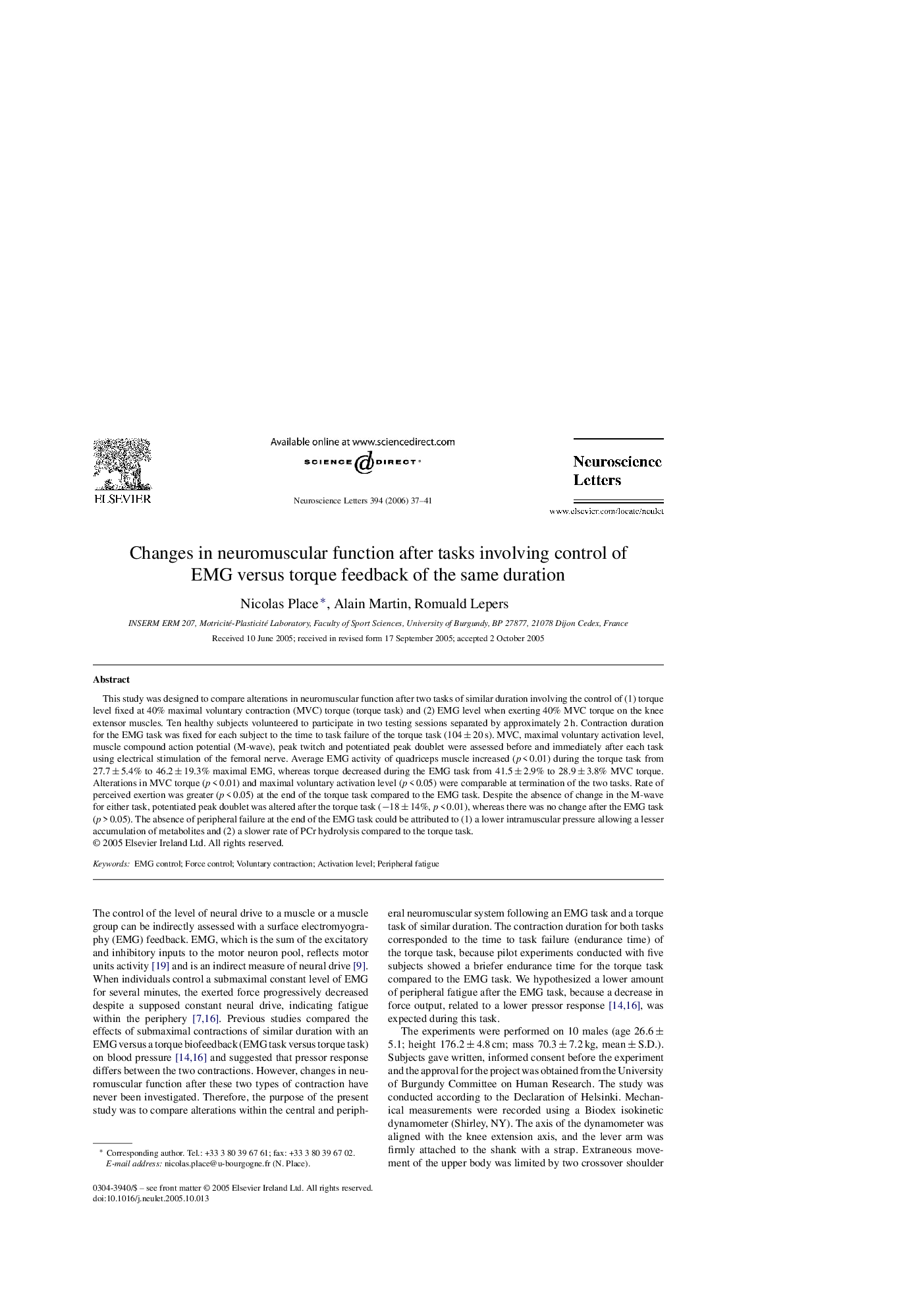| Article ID | Journal | Published Year | Pages | File Type |
|---|---|---|---|---|
| 4351192 | Neuroscience Letters | 2006 | 5 Pages |
Abstract
This study was designed to compare alterations in neuromuscular function after two tasks of similar duration involving the control of (1) torque level fixed at 40% maximal voluntary contraction (MVC) torque (torque task) and (2) EMG level when exerting 40% MVC torque on the knee extensor muscles. Ten healthy subjects volunteered to participate in two testing sessions separated by approximately 2 h. Contraction duration for the EMG task was fixed for each subject to the time to task failure of the torque task (104 ± 20 s). MVC, maximal voluntary activation level, muscle compound action potential (M-wave), peak twitch and potentiated peak doublet were assessed before and immediately after each task using electrical stimulation of the femoral nerve. Average EMG activity of quadriceps muscle increased (p < 0.01) during the torque task from 27.7 ± 5.4% to 46.2 ± 19.3% maximal EMG, whereas torque decreased during the EMG task from 41.5 ± 2.9% to 28.9 ± 3.8% MVC torque. Alterations in MVC torque (p < 0.01) and maximal voluntary activation level (p < 0.05) were comparable at termination of the two tasks. Rate of perceived exertion was greater (p < 0.05) at the end of the torque task compared to the EMG task. Despite the absence of change in the M-wave for either task, potentiated peak doublet was altered after the torque task (â18 ± 14%, p < 0.01), whereas there was no change after the EMG task (p > 0.05). The absence of peripheral failure at the end of the EMG task could be attributed to (1) a lower intramuscular pressure allowing a lesser accumulation of metabolites and (2) a slower rate of PCr hydrolysis compared to the torque task.
Related Topics
Life Sciences
Neuroscience
Neuroscience (General)
Authors
Nicolas Place, Alain Martin, Romuald Lepers,
